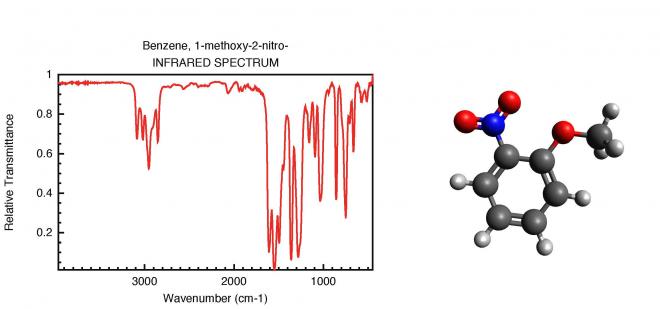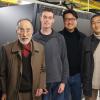Molecular fingerprinting
Infrared spectroscopy is often referred to as ‘molecular fingerprinting’, enabling molecules to be identified by their unique vibrational signature. It is the main technique used for identifying contraband substances such as narcotics, explosives and illegal pharmaceuticals. However, as with standard human fingerprinting, the ‘culprit’ can only be identified by comparison with a database of known substances. If the substance isn’t in the database, then no identification can be made.
Although there are many similarities between the processes of human fingerprinting and molecular fingerprinting, there is one key difference. While it is impossible, both in theory and in practice, to predict what human fingerprints will look like, even if an entire individual’s genome is known, it should be possible to predict a molecule’s fingerprint.
Developing the theoretical and computational tools required to do this has been the focus of Dr Marat Sibaev’s PhD project (Department of Chemistry, the University of Canterbury). Although it sounds straightforward, understanding how molecules vibrate is a complicated and computationally intensive problem, as one first must model the behaviour of the electrons around each atomic centre and across the molecule as a whole, before moving on to how describing how the energy of the whole system changes as the molecule vibrates.
As there are usually many atoms in a molecule, there are many different ways those atomic centres can move relative to one another, so describing how the energy changes for all possible motions is hard. The key insight from Dr Sibaev’s work is that it is easiest to mathematically model how the energy changes as the molecule moves in ‘chemically recognisable’ ways – as bonds stretch, and angles bend, and rotations around bonds occur – but determining the kinetic energy due to molecular vibrations is much easier if the atoms are assumed to move in straight lines.
Unfortunately, these two ways of looking at how molecules move are not totally compatible in a straightforward way, so Dr Sibaev has developed some new software to help interconvert between these two different perspectives on atomic and molecular motion.
Dr Sibaev then deployed this software on NeSI’s supercomputing facilities at the University of Canterbury, enabling him to predict the vibrational fingerprints of molecules from first principles, using a completely automated procedure. This potent combination of theory and code development, and access to the supercomputing resources available through NeSI, now allows routine prediction of molecular fingerprints for molecules with up to 25 atoms, encompassing most known drug-like or potentially explosive molecules. This is a substantial increase in capacity beyond what is possible using other current methods, which typically have only been applied to quite small molecules, comprising less than 10 atoms.
According to Dr Sibaev’s supervisor, Dr Deborah Crittenden, "Access to the increased computing capacity of the NeSI supercomputers facilitated Dr Sibaev's research by speeding up the rate at which he was able to generate the data required for his project. In particular, he made extensive use of the NeSI computers to calculate how a molecule's energy changes as the molecule vibrates and predict molecular fingerprints from this data."
Perhaps most excitingly, Dr Sibaev’s research will enable molecular fingerprints to be predicted for completely new, perhaps as yet undiscovered or unsynthesised molecules. This will elevate infrared spectroscopy from being a limited diagnostic method into a characterisation tool that can be used to assign the structure of unknown molecules and compounds. Potentially this will save both money and time, as infrared spectrometers are relatively cheap compared to other spectroscopic methods currently used for structural assignment, such as nuclear magnetic resonance (NMR) and X-ray crystallographic. Further, infrared spectrometers are much easier to use, and compatible with a larger range of sample types. Molecular fingerprints can be obtained regardless of whether the molecules are present as solids, liquids, or gases.
Researcher: Dr Marat Sibaev; Supervisor: Dr Deborah Crittenden.







